Louis Nicolas (1634–post-1700), who spent eleven years in New France as a Jesuit missionary, created an illustrated manuscript now known as the Codex Canadensis—one of the treasures of early colonial art from the region. An intrepid traveller and talented linguist, Nicolas was fascinated by the natural history and ethnography he encountered during his missionary work. His drawings of the local plants, animals, and Indigenous peoples stand out because, in subject and style, they are very different from the official portraits and religious scenes that dominated art of this period.
The Making of a Missionary
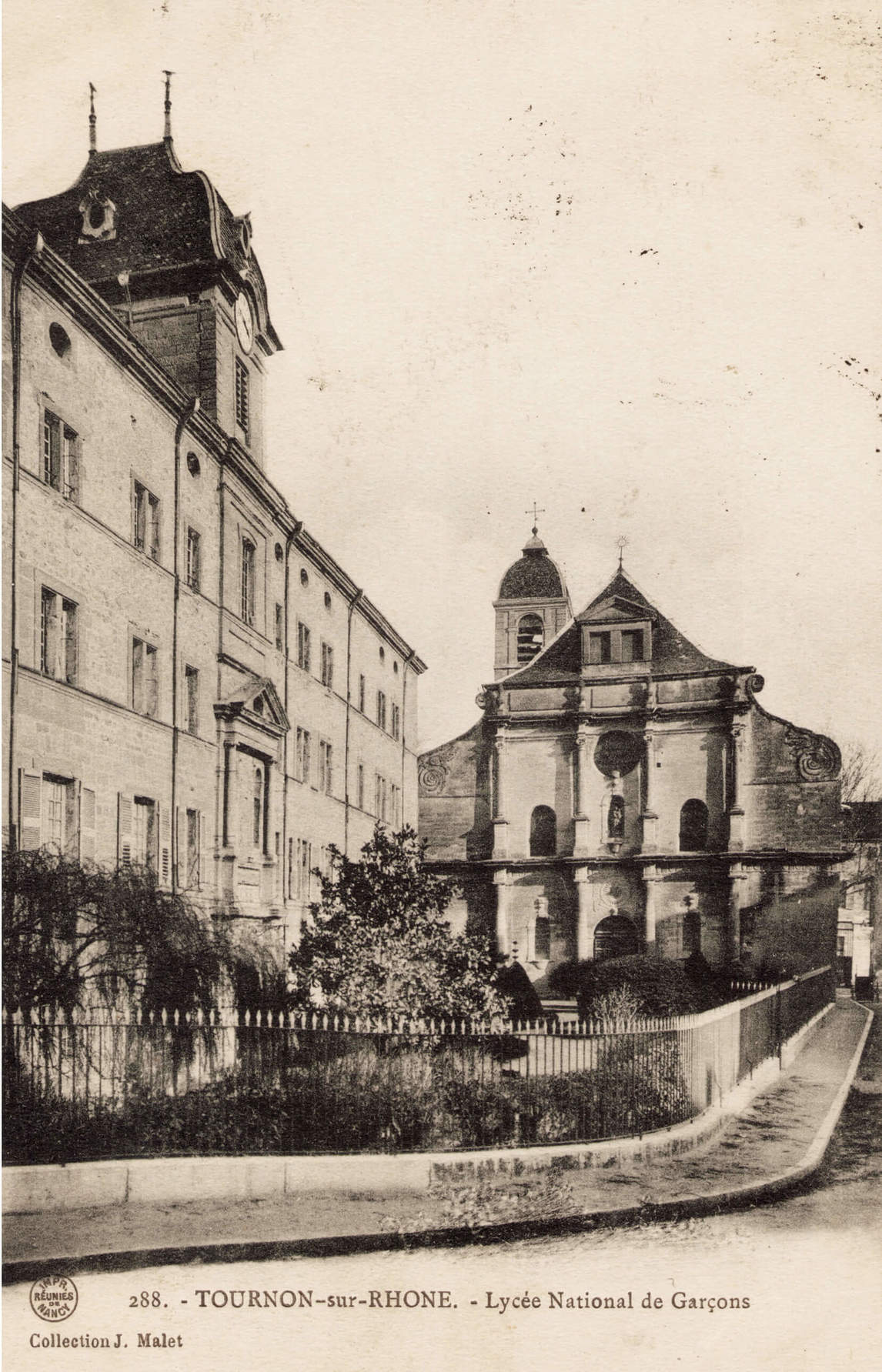
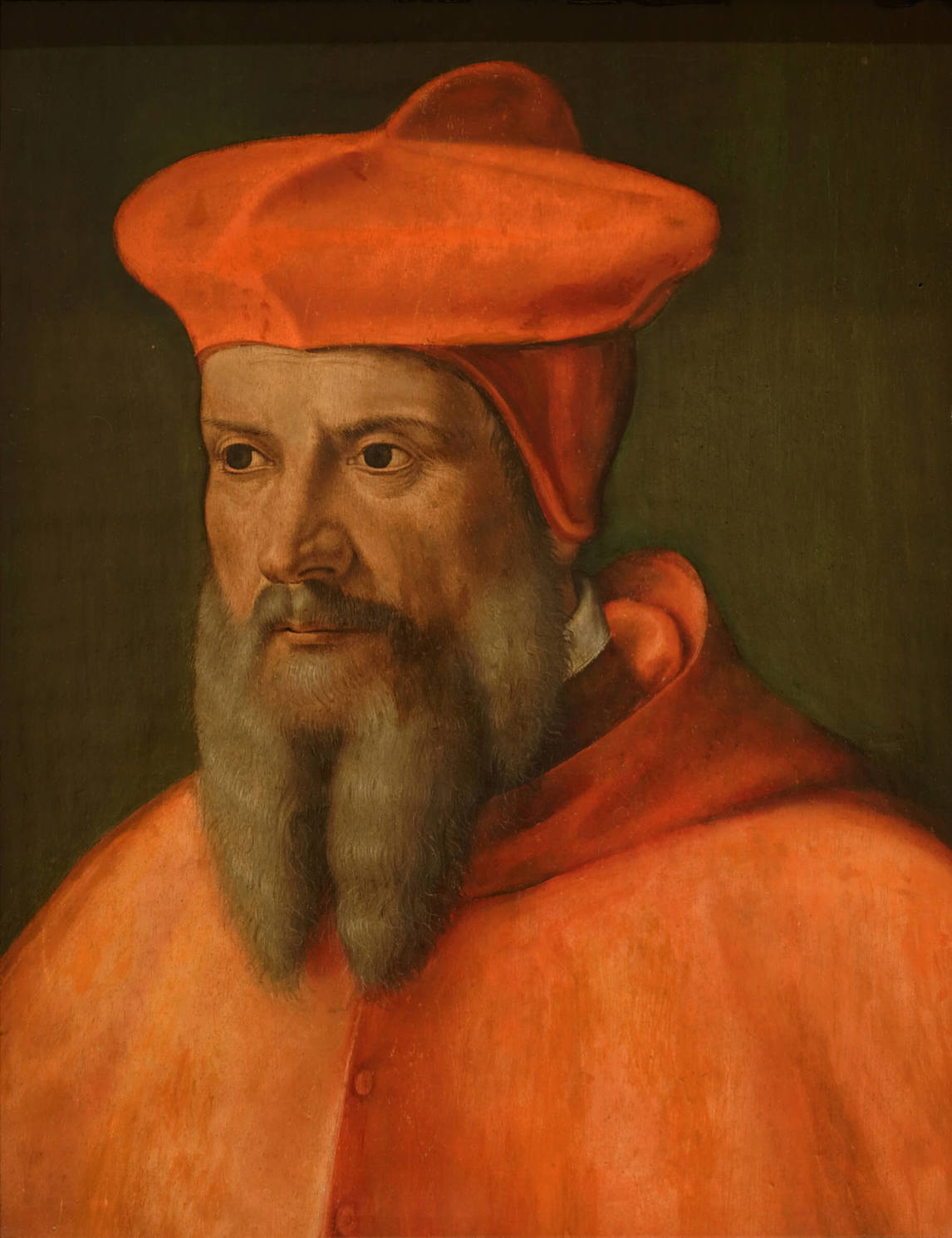
Louis Nicolas was born in the Ardèche region of France, in Aubenas, on August 15, 1634, and baptized on September 4. Little is known about his life before he entered the Society of Jesus (the Jesuits) on September 16, 1654, in Toulouse, a few months after his mother’s death. As a boy, he may well have attended one of the free schools established by the Jesuits across France to educate poor but motivated boys. After becoming a novice Jesuit himself, for a decade he followed the standard curriculum focused on grammar (language, written and oral) and philosophy (drawn from Aristotle as interpreted by Saint Thomas Aquinas rather than the more contemporary scientific discoveries of Francis Bacon and René Descartes). During that time he also taught grammar for four years (1656–60) in Saint-Flour and for one year in Le Puy-en-Velay (1661) before studying philosophy in Tournon-sur-Rhône from 1661 to 1663, at the school founded by François de Tournon (pictured here).
There is no information that Nicolas received any instruction in art. Perhaps he developed a natural talent, which would explain the naïve style of his drawings. For one example, see The Small Owl (La petite chouette), n.d., on page 51 of his illustrated manuscript, the Codex Canadensis. Nicolas’s intention was less artistic than scientific, and it’s fair to compare his sketches to those by other naturalists before him, Conrad Gessner (1516–1565), for example. Considered a naturalist, Nicolas stands out for the information he conveyed through his drawings and his writings.


The Jesuits were a Catholic religious order opposed to reform in Europe, supportive of the Pope, and interested in education. Ambitious to convert the whole world to Catholicism, they established a missionary wing that, in the seventeenth century, operated in China and Brazil as well as North America. A few of their missionaries in China—men such as Matteo Ricci, Johann Adam Schall von Bell, and Ferdinand Verbiest—caused great excitement when they used their knowledge of astronomy to predict the eclipses of the sun and moon. But their efforts were mostly directed at converting the people they worked among, and so the Jesuit missionaries tried to learn the local languages and to understand the customs of the people.
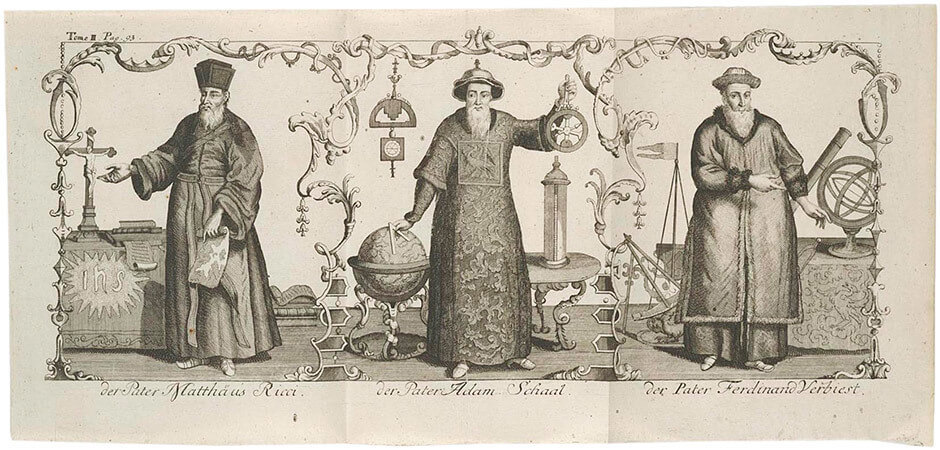
Nicolas’s career was governed from 1654 to around 1678 by the Jesuits. Within their strictly hierarchical structure, the superiors demanded that the men under them be diligent in their work and capable of independent initiative, yet always respectful and obedient. Nicolas lacked many of these qualities, preferring to follow his own interests in his own way. His teachers at Tournon judged him to be of average ability, more suited to manual work than to intellectual pursuits. Even before he completed his course of studies, however, in 1661 he wrote enthusiastically to the vicar-general of the Society, Father Giovanni Paolo Oliva, asking to be sent as a missionary to Canada. Three years later, though he was still a novice, his request was granted.
A Jesuit in New France

The Jesuits arrived in New France in 1611 with the goal of converting the Indigenous peoples to Christianity. Over the following years they focused on exploring the regions radiating from Quebec, learning the local languages, and studying the customs of the various groups they encountered. Their members had to be strong and vigorous, capable of travelling long distances by canoe and on foot in their efforts to establish missions in the hinterland. It was lonely and difficult work, but they were motivated by their belief that they were saving souls from damnation. We can follow their missionary activities in detail through the Jesuit Relations (Relations des Jésuites), published between 1632 and 1672 in Paris.
The little we know about Nicolas’s missionary activities, other than from his own writings, comes from the Jesuit Relations and the Journal of the Jesuits. The Relations were written by the Jesuit Superior, located in Quebec or in France, using reports provided by individual missionaries, and they offer valuable ethnographic information on the early contact period—the languages, warfare, food, migrations, and beliefs of the people the Jesuits wished to convert. The Superior’s Journal documented all the missionaries’ travels. Despite Nicolas’s extensive expeditions in North America, he is mentioned briefly in only three passages in the Relations. These volumes focus on the conversion efforts of the order, not their scientific interests, and Nicolas gives the impression in his own writings that he was more interested in observing nature than in saving souls.
Thirty years old when he arrived in New France in May 1664, Nicolas was first sent to the Jesuits’ residence in Sillery, near Quebec City, to complete his studies in theology and to learn the Algonquin language. By November 1666 he had mastered the language and was posted to the Algonquin territory north of Trois-Rivières, Quebec, to seek converts and combat alcoholism among the people. He returned to Quebec City in March 1667 and made his final vows on May 29 of that year.
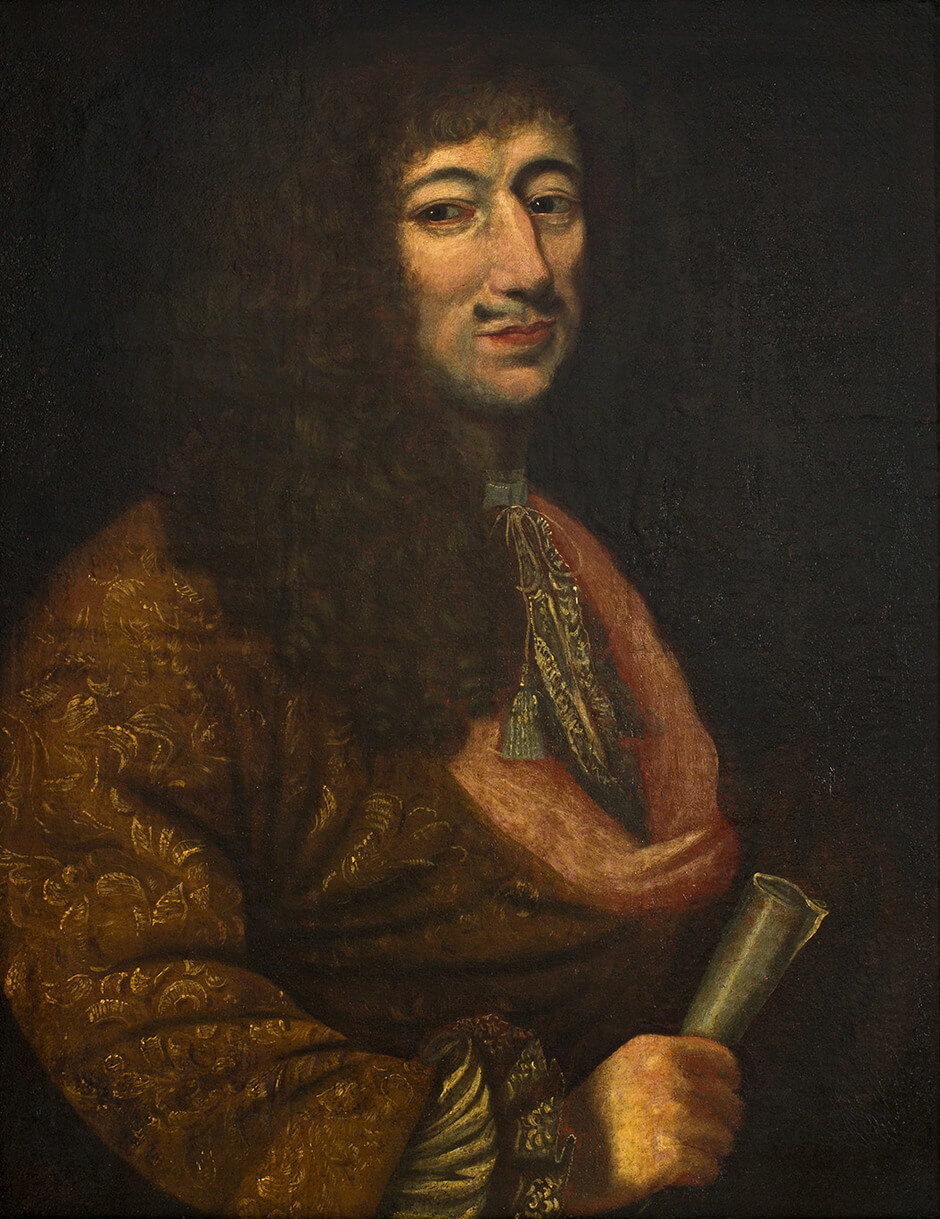
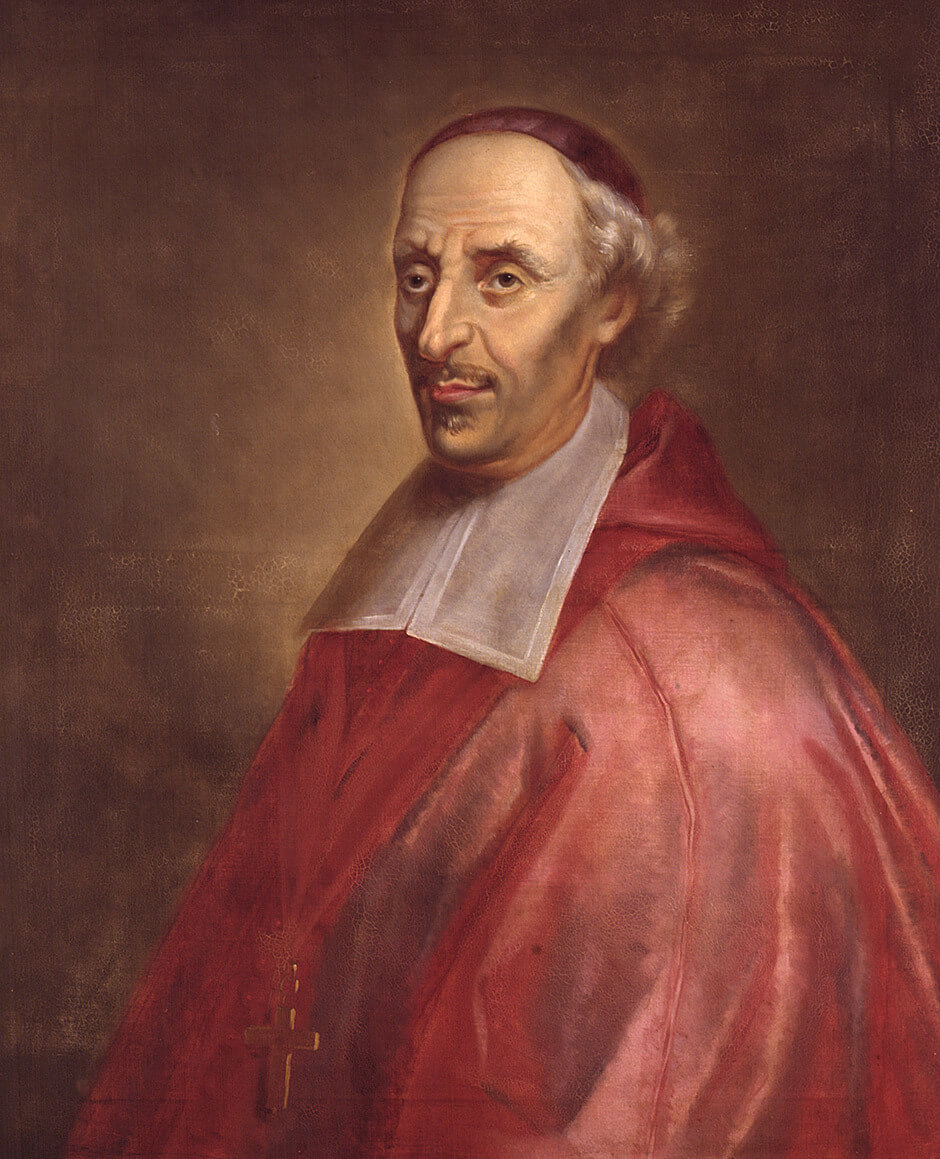
At this time, New France, founded just fifty-six years earlier, was undergoing significant political, economic, and social development under two ambitious men: Jean Talon, the first intendant, and François de Laval, the first bishop. Although almost all the paintings in New France were imported from France, the visiting artist and architect Frère Luc (1614–1685), who had joined the Récollet Order in mid-life, not only designed part of the Hôpital Général, the Séminaire de Québec, and the chapel for his religious order during the fourteen months he was there, in 1670–71, but also painted religious scenes for churches, portraits, and a number of religious paintings.
Unlike Frère Luc, Nicolas was a missionary priest, and he focused in his artwork on the nature he observed and on the Indigenous peoples he met. (See, as only one example of several, Portrait of a Man of the Nation of the Noupiming-dach-iriniouek [Portrait d’un homme de La Nation des Noupiming = dach = iriniouek], n.d., which he based on an engraving found in a book by François Du Creux [1596–1666], who never travelled to New France. The Noupiming-irriouek lived in the region of Lake Abitib.) When he eventually made his drawings, probably in the 1690s in France, he remembered some of the aesthetic tendencies among the Indigenous peoples he had encountered—for example, their body painting and the decorations on their clothing, tobacco pouches, and masks. This interest was uncommon among European visitors to North America at the time: most missionaries had only scorn for any Indigenous nations’ artistic manifestations, and so did not record them. In that sense, Nicolas’s sketches are unique.

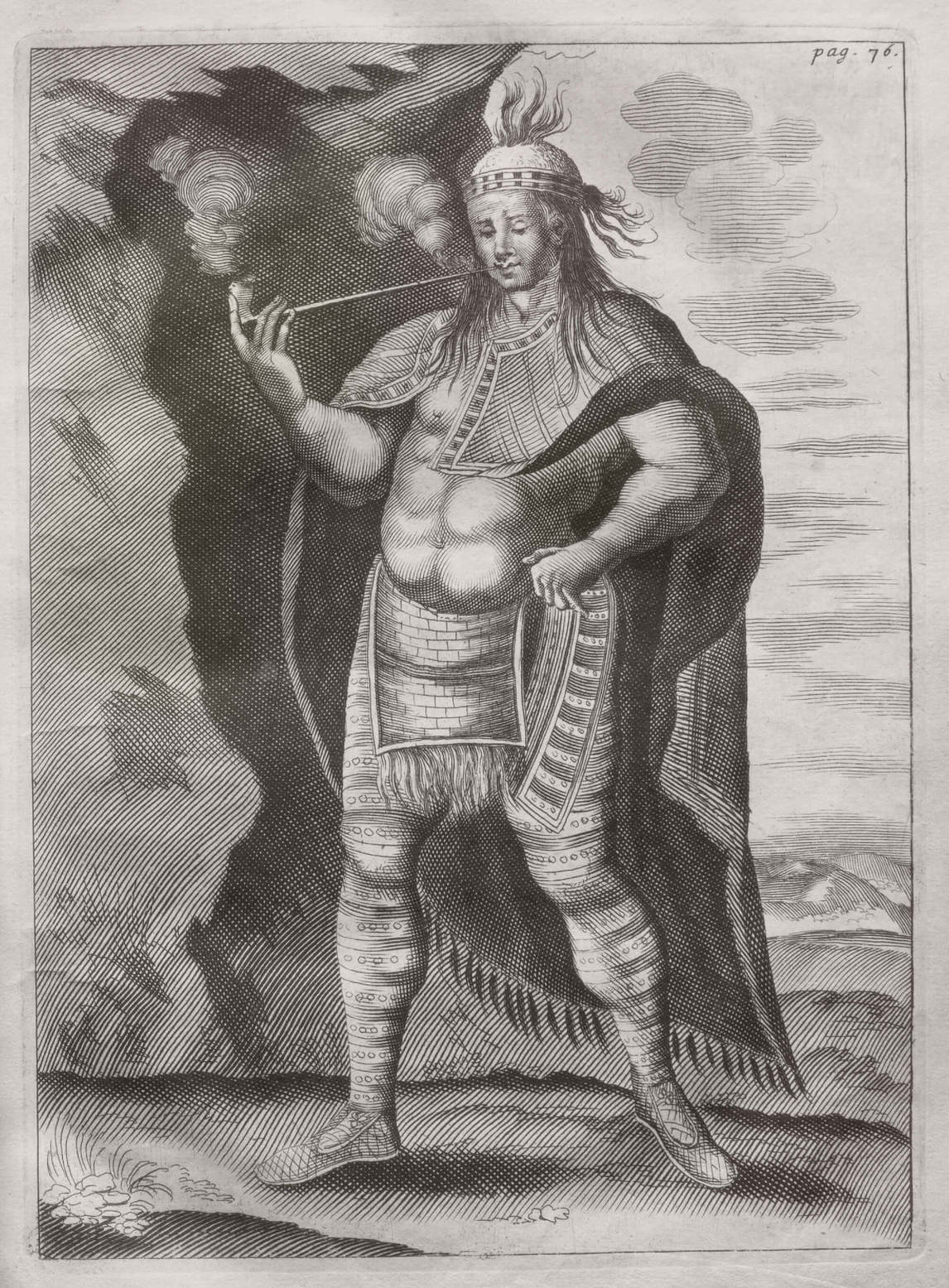
The Missionary at Work
During his eleven years in New France (1664–75), Nicolas travelled from the western end of Lake Superior to Sept-Îles (at the eastern end of New France), and from Trois-Rivières to the Iroquois lands south of Lake Ontario, his trips interspersed by numerous visits to Quebec. All of these trips were made at the behest of his Jesuit superiors, but he seems to have initiated at least one himself to a place he called “Virginia,” south of Lake Erie. He later created two ornate maps to record his travels, one of the Saint Lawrence Valley and the other of the Mississippi River (Manitounie), and, like other cartographers of the period, he filled them with topographical features and place names—and, on his map of Manitounie, the figures of a fish and a snake.
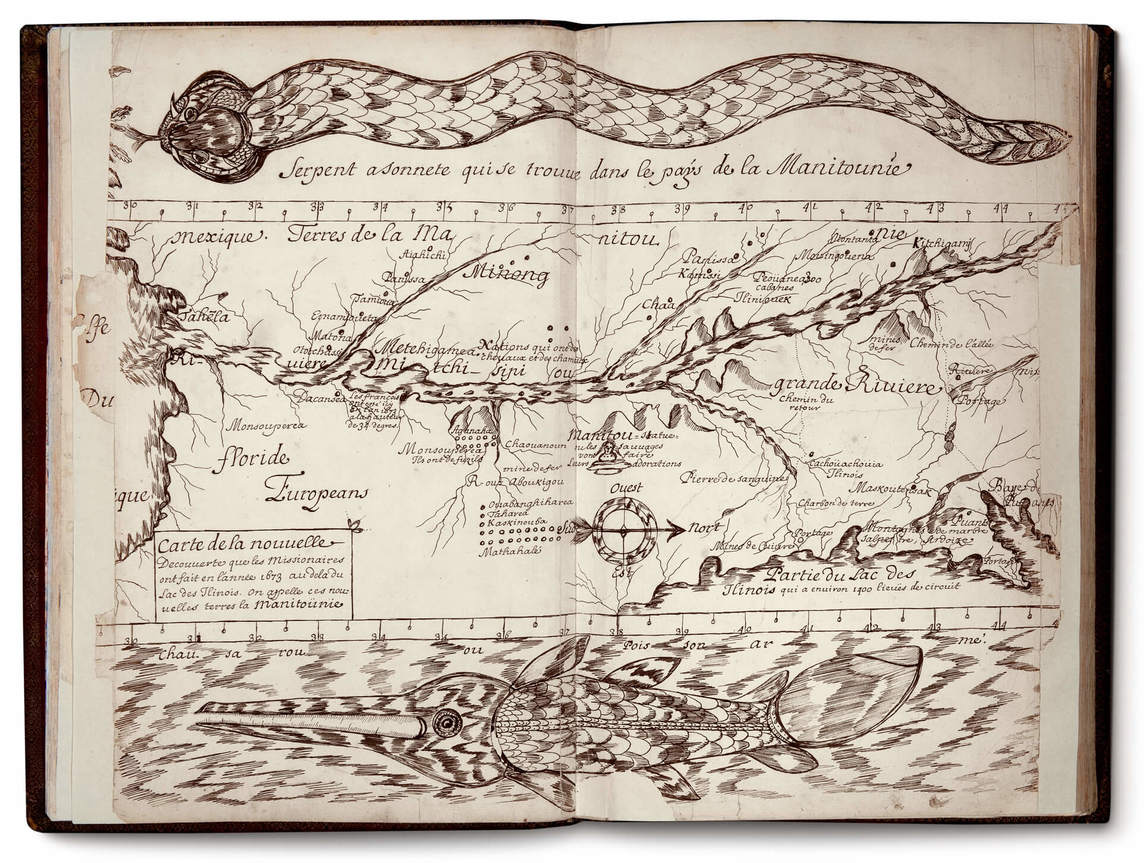
Nicolas’s first mission was to Chequamegon Bay, an isolated post situated on the southwest bank of Lake Superior. On August 4, 1667, Father Claude Allouez had returned to Sillery from the Saint-Esprit Mission in Chequamegon to recruit some “worthy men” as well as a missionary with facility in Algonquin. Nicolas was chosen as the man to go. Their journey was arduous: Marie de l’Incarnation, the founder of the Ursuline Order of nuns in Canada, reported that the Indigenous guides were overloaded and, when they reached Montreal, they threw the priests’ baggage onto the shore.
Allouez left Nicolas in charge of the mission at Chequamegon and continued on alone up the Baie des Puants (Green Bay) on Lake Michigan, where he founded the Saint-François-Xavier Mission. Chequamegon was in Outaouaks (Ottawa) territory, part of the larger Northern Algonquin lands, and, as a centre for trade in the region, it afforded the opportunity for contact with people from many surrounding groups. As such, it was an ideal location for a mission—and, as it turned out, for the documentary artist (Nicolas’s King of the Great Nation of the Nadouessiouek [Roy de La grande Nation des Nadouessiouek], Portrait of a Famous One-eyed Man [Portrait d’un Illustre borgne], and Fishing by the Passinassiouek [La pesche des Sauvages], all n.d., illustrate some of the Indigenous leaders he met there as well as some of the customs and implements he observed). He also travelled widely from this base: the Codex Canadensis includes drawings of Illinois and Sioux chiefs, a Mascouten man, and an Amikouek man, all of whom he would have encountered in a large area around Lake Huron and extending north.
Within the year, Nicolas returned to Quebec, possibly sent back because of his bad temper and vanity. Antoine Alet, secretary of Gabriel de Queylus, Superior of the Sulpicians of Montreal (an order of priests engaged mainly in parish work), said the Algonquin chief Kinonché had complained that Nicolas had beaten him with a stick—even though he was the leader of a nation. Nicolas had also boasted that, when he arrived in Montreal, he would celebrate mass dressed in magnificent gold and silver garments, proving to the people how well respected he was. When the Sulpicians learned about these boasts from Kinonché himself, they refused to allow Nicolas to celebrate high mass. This unruly side of Nicolas’s nature may be reflected in the way he scorned people who didn’t believe in the existence of unicorns (a creature he depicted in the Codex) and in his comments in another of his books, The Natural History of the New World (Histoire naturelle des Indes occidentales).

The Jesuit Relations are vague about the success of this mission, but it seems that Nicolas was more interested in exploring and involving himself in the fur trade than in converting the local inhabitants. It is likely that his superiors disapproved of his work, though the Jesuits engaged in this trade to some extent, much to the annoyance of the French and English merchants.
A document written by Father Le Mercier to the General of the Jesuits in Rome on June 21, 1668, states that Nicolas was sent back to Quebec because “he was not really proper for that mission” owing to “his rough manners and behaviours, and also because of his lack of foresight in business and his frequent and sudden movements of wrath, that scandalize both the French and the Natives.” Nicolas “shed so many tears” and “manifested such a regret of what he was accused” that he was allowed to return to Chequamegon. However, he was back in Quebec in the spring of 1669.
Meeting Father Jean Pierron
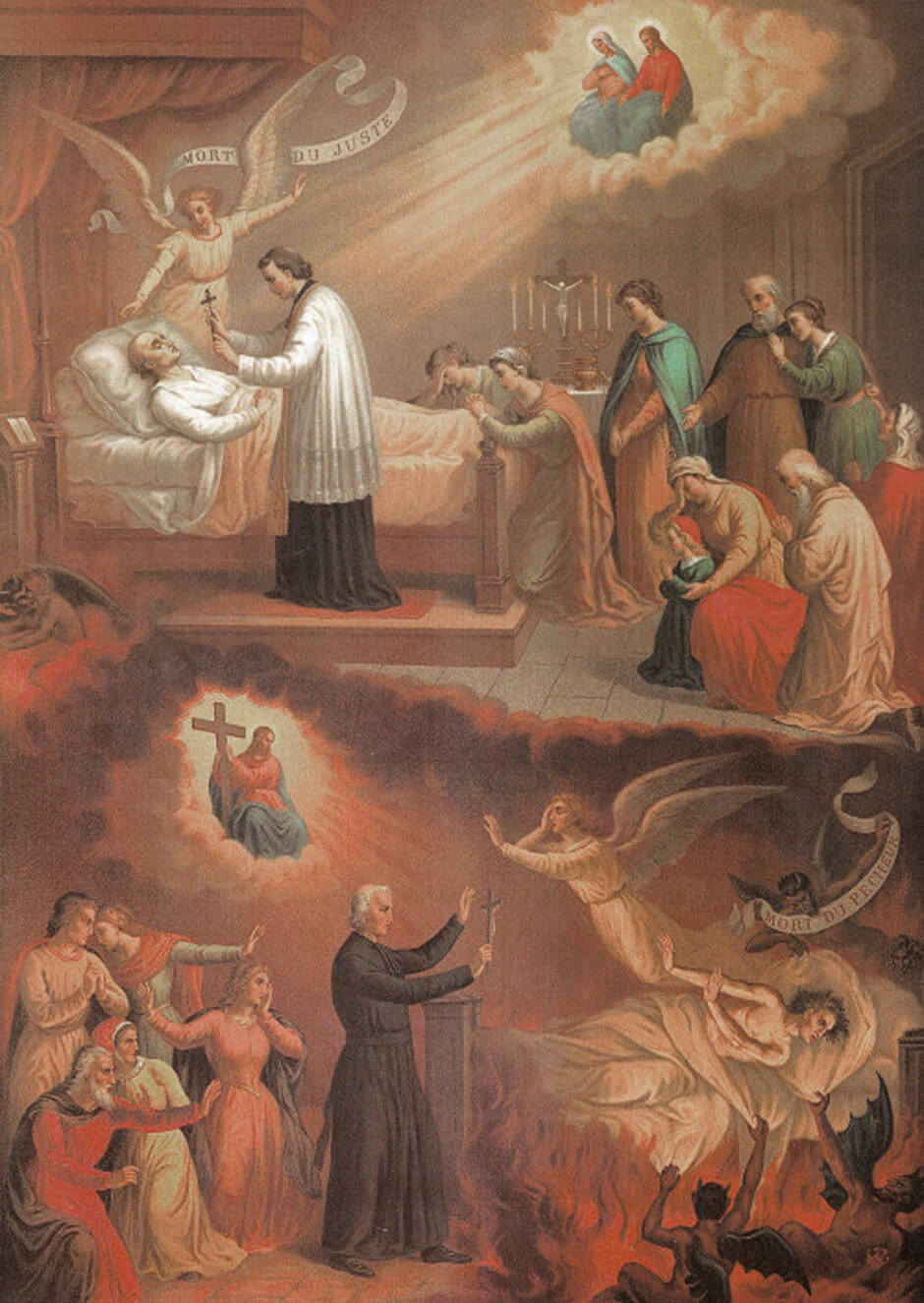
Nicolas remained in Quebec until a visit from Father Jean Pierron (1631–1700) in 1670 changed his fate. Pierron was a missionary who used his talent as an artist to create devout spiritual paintings that served him powerfully in his attempts to convert Indigenous peoples to Christian beliefs, as did Father Claude Chauchetière (1645–1709) at the Jesuit Iroquois mission of Saint-François-Xavier at Sault St. Louis (Kahnawake, Quebec). Pierron had painted images of both a good death and a bad death (la bonne et la mauvaise mort), for instance, with the former giving entry to heaven, and the latter to hell. (This image has not survived, but the theme has resurfaced in modern versions of the Catechism in Pictures [catéchisme en images], an example of which is seen here.) On the other hand, the portrait of Saint Kateri Tekakwitha, the original attributed to Chauchetière and a facsimile of which is now in the Church of Kahnawake, is of a more recent date and by an anonymous author.
Pierron was proud of his achievements in Tionnontoguen, the Iroquois territory where he had spent fifteen months, and he asked his superiors to send more missionaries to Iroquois territory, where he thought they would make many converts. His request was honoured, and Father Thiery Beschefer and Nicolas accompanied Pierron back to the mission, which was located at Ossernenon, present-day Auriesville, New York, not far from the Mohawk River. It is unclear whether Nicolas was active there. Father Claude Dablon, who wrote the Relations of 1671–72, mentions the many baptisms that Pierron performed but is silent about Nicolas and Beschefer. The only thing we know for certain, according to the Restored Catalogue of the Jesuits of New France (Catalogue restauré des Jésuites de la Nouvelle France) (n.d.), is that in 1671 Nicolas was back in Quebec.
Nicolas’s The Natural History offers one possible reason why he may have been sent back once again to Quebec: his passion for travel over the Jesuit goal of conversion. In a few places in The Natural History he mentions a trip he made to “Virginia,” which he located south of Lake Erie. Nicolas returned with a wealth of information on the plants and animals of the region (see, for example, his Papace, or Grey Partridge [Papace ou perdris grise], n.d.) and details about the daily life of the inhabitants. He seems to have been less successful, however, in converting many people to Christianity.


Writing the Grammaire and the Mémoire
In 1672 Nicolas was the vicar at Sillery. His responsibilities were light, and it is probably during this period that he began to write his Algonquin Grammar (Grammaire algonquine), a dictionary of the Algonquin language, which he penned between 1672 and 1674 and which has no illustrations.

In the spring of 1673 his Superior sent him to Sept-Îles. Like Chequamegon, it was a trading post. On his way back from Sept-Îles in June or July 1673, Nicolas served as a procurator at Cap-de-la-Madeleine. There he likely wrote his Memorandum for a Missionary Who Will Go to the Seven Islands, Which the Savages Call Manitounagouch, or Properly, Manitounok (Mémoire pour un missionnaire qui ira aux 7 isles q[u]e les sauvages appelent Manitounagouch ou bien manitounok). This text, which is also without illustrations, is only four pages long, but Nicolas reveals himself to be a good ethnographer, able to distinguish the three principal cultures of the region and their dialects: the Montagnais Papinachois (Opâpinagwa), the Oumamiwek (Bersiamite), and the Inuit. As he also describes the plants and animals of the region, he highlights his talents as a keen naturalist.
Although Nicolas possessed a genuine passion for missionary work, his avid interest in natural history and travel, along with his rude manners, made it impossible for him to meet the standards demanded by his Jesuit superiors. In 1675 he was sent back to France. The final mark against him may possibly have been that he kept two captured bear cubs in the grounds of the Jesuit residence in Sillery and trained them to do tricks, with the idea of bringing them back to France and presenting these “curiosities” to King Louis XIV himself.
Creating the Codex Canadensis in France
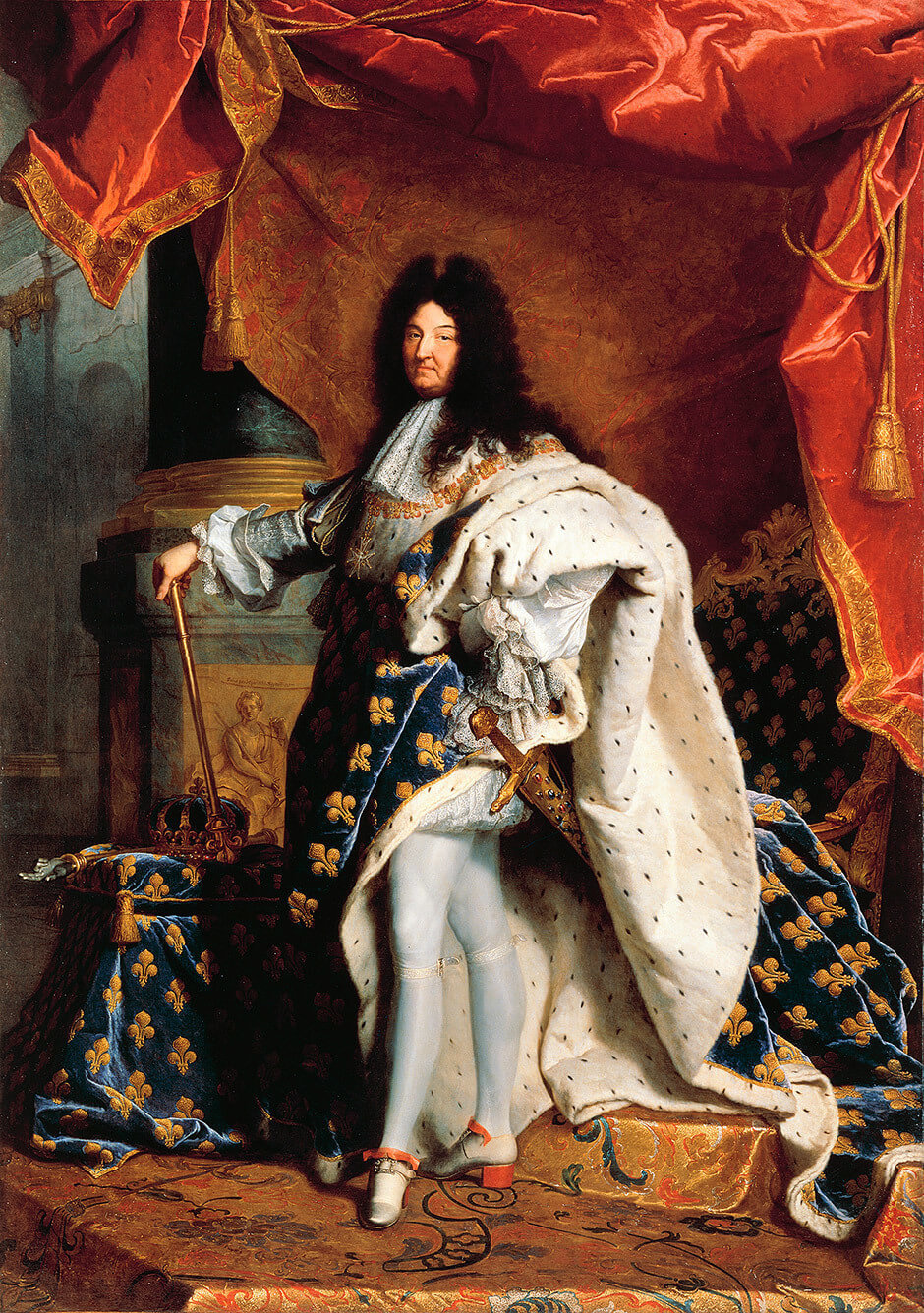
Little is known for certain about Nicolas after he returned to France. It seems, though, that he succeeded in his desire to present an animal from North America to the king. As he relates in The Natural History of the New World, he gave a chipmunk he had brought instead of the bears he had tamed, because, he said, he did not have a box big enough to carry them to France.
Nicolas left the Jesuit Order in 1678 after his superiors refused to permit him to publish The Natural History, which by that time he had begun to write. As a well-trained seventeenth-century Jesuit, Nicolas liked to organize his knowledge into hierarchical systems based on the principles set out by Aristotle. He dreamed of writing a series of works on the New World: a complete “catechism,” including a grammar book; a topographical study; a natural history of plants, animals, birds, and other creatures; and a study of Indigenous peoples—their customs, religion, and government. He never completed this task, but experts have now attributed five particular manuscripts to Nicolas: the Algonquin Grammar, Treatise on Four-footed Animals (Traité des animaux à quatre pieds), Memorandum for a Missionary, The Natural History, and the Codex Canadensis. The first three seem to have been written in New France, and the latter two after his return to France.
Several details in the text of The Natural History and the captions of the Codex indicate that Nicolas wrote most of The Natural History during the 1680s and created the drawings for the Codexin the 1690s, relying on his memory, supplemented by descriptions and engravings in published books. His “portraits” of different Indigenous nations in the Codex—for instance, his King of the Great Nation—are often inspired by the engravings illustrating The History of Canada, or of New France (Historiae Canadensis seu Novae Franciae Libri Decem) (1664) by François Du Creux (1596–1666). Similarly, his animals—for instance, his otter or his beaver—were inspired by images in The History of Animals (Historiae Animalium) (1551–58, 1587) by Conrad Gessner (1516–1565). Despite the similarities of Nicolas’s drawings to these sources, however, they are all rendered in a style that is unique and unmistakably his own. Some, particularly the sketches of birds, are remarkably accurate in their details, such that experts can identify them today; but others (for example, the unicorn), are imaginary or, as with the “sea monster,” include fanciful characteristics.

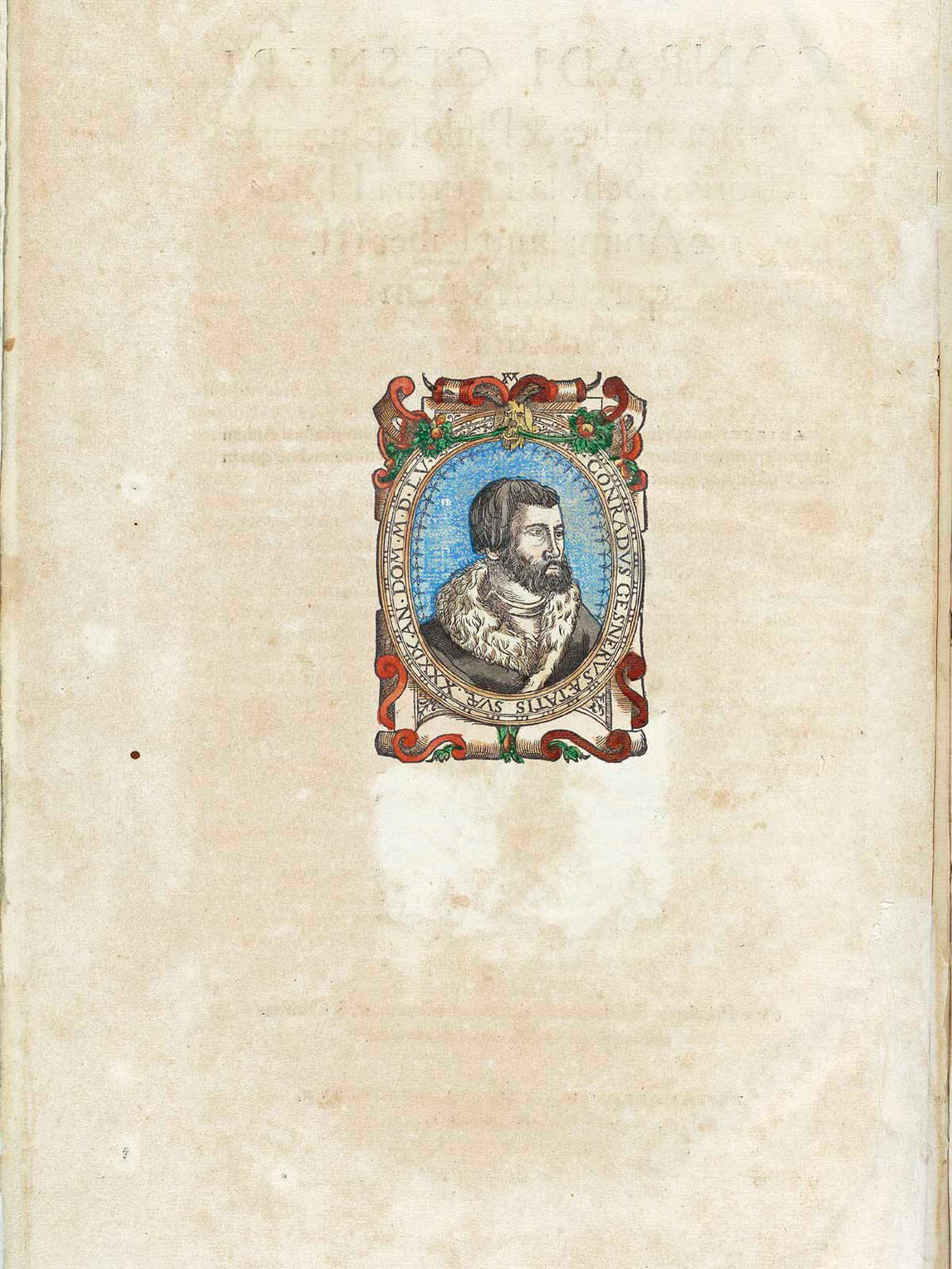
No evidence has been found to explain how Nicolas supported himself over these two decades, but he may have become a parish priest, with several short postings. He must have had access to major libraries—perhaps the library of Sainte-Geneviève-du-Mont in Paris, which housed some twenty thousand printed volumes and a cabinet of curiosities. Like most well-educated men of his day, Nicolas probably found a patron to support him in his endeavours.
The dictionary of French-Canadian clergy states that he died in 1682, though it provides no documentation and no proof. The date is certainly wrong: both The Natural History and the Codex Canadensis were completed later and both have been attributed to Nicolas. If this interpretation is correct, as I believe it is, Nicolas was alive at least in 1700. In that year he would have been sixty-six years old.

 About the Author
About the Author
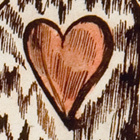 More Online Art Books
More Online Art Books
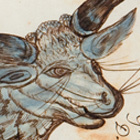 Acknowledgements
Acknowledgements